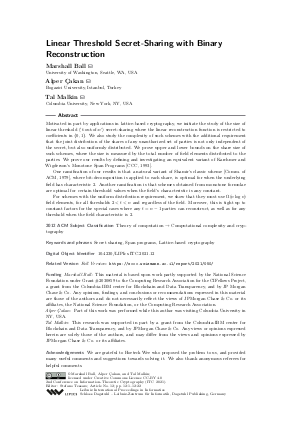LIPIcs.ITC.2021.12.pdf
- Filesize: 0.77 MB
- 22 pages

 Creative Commons Attribution 4.0 International license
Creative Commons Attribution 4.0 International license





















Feedback for Dagstuhl Publishing